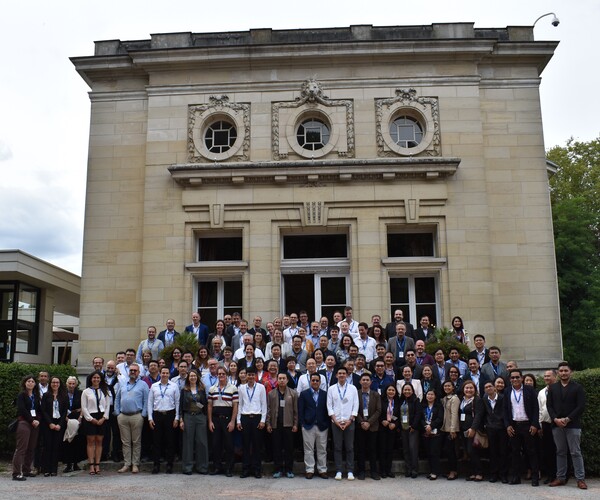Discussion on trace minerals was among the highlights of the 3rd Animine Academy
Published: November 8, 2019
By: http://www.animine.eu/

On 9-10 September, Animine and the European Federation of Animal Science (EAAP) organized the third Animine Academy in the Chantilly area (France). This two-day international scientific conference gathered more than 100 animal nutritionists from the industry and academy. High quality presentations focused on current challenges in animal production through different themes reviewed by renowned experts.
Dr. Daniel Brugger, from Technical University of Münich (Germany), exposed differences between bioaccessibility (access to intestinal mucosa), digestibility (difference between intake and excretion), and bioavailability (availability for biological processes) of macro-minerals and micro-minerals. He highlighted that appropriate and sensitive biomarkers to determine the bioavailability of trace minerals are still under discussion.
Dr. Gretchen M. Hill, from Michigan State University (USA), reviewed trace minerals in swine diets in the USA where high level of zinc and copper are common practices around weaning. In her opinion, some questions still need to be answered like requirements in zinc and copper of today’s high producing sows. Indeed, pigs NRC recommendations have to be regularly updated because of changes in genetics, farm management and feedstuffs.
Lisbeth Shooter, from SEGES (Danish Pig Research Center), updated the audience with the reduction of zinc oxide in piglet diets in Denmark. In June 2022 latest, medicated ZnO will be banned, like in all EU Member States. They tested different feeding strategies with various results. It looks like success to prevent post-weaning diarrhea is a combination of actions at the farm level, on animals, and on feeds.
Finally, to end the first day of Animine Academy, Dr. Kevin Waldron, from Newcastle University (UK), presented the process of nutritional immunity applied to metals, at host/pathogen interface. He explained how vertebrate immune proteins sequester metals, in particular zinc, iron, and manganese, as a strategy to limit bacterial acquisition of these necessary nutrients.
On the second day, a special emphasis was made on the need for more sustainable practices with zinc and copper supplementations, due to the risks of environmental accumulation and increased antibiotic resistance.
Dr. Kristian K. Brandt, from Copenhagen University (Denmark), reviewed bacterial resistance in the animal-soil-human chain. One of the conclusions was that the role of metals in the dissemination of resistance genes significantly increases with a combined usage with antibiotics.
Hans Blonk, Director of Blonk Consultants, described Life Cycle Analysis (LCA) for animal production systems. Methodologies for life cycle assessment follow now international standards. In 2018, the Product Environmental Footprint guidance (PEFCR) of animal feeds has been officially published in the European Union.
The unique format of Animine Academy allowed time for lively discussions and enabled an intensive exchange between science and industry.
Source
http://www.animine.eu/Related topics:
Authors:

SEGES
Show more
Recommend
Comment
Share

Would you like to discuss another topic? Create a new post to engage with experts in the community.












